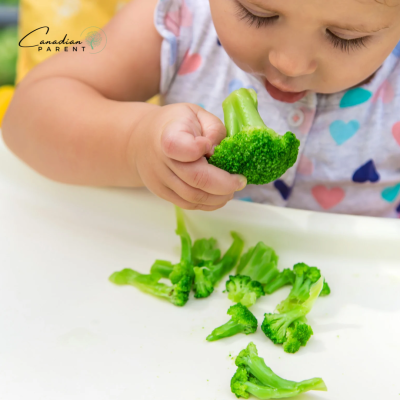Do you think baby-led weaning is safe?

Baby-led weaning is all the rage in the parenting world. Do you think baby-led weaning is safe? Answer our poll to give your opinion and get 3 bonus entries for the chance to win Free Diapers For A Year!
Do You Think Baby-Led Weaning Is Safe?
Baby-led weaning (BLW) has become a popular feeding approach among parents who want to encourage their baby’s independence and self-regulation. But many parents still wonder: Is baby-led weaning safe? In this article, we’ll explore what BLW entails, the potential benefits and risks, and how to ensure it’s done safely.
What Is Baby-Led Weaning?
Baby-led weaning is a feeding method where parents skip purees and spoon-feeding, allowing their baby to self-feed finger foods from the start of weaning. Typically introduced around six months of age, when most babies can sit up unassisted and show signs of readiness, BLW emphasizes giving babies control over what and how much they eat.
Why Parents Love Baby-Led Weaning
Parents who practice baby-led weaning often highlight these benefits:
- Promotes Independence: Babies learn to feed themselves, fostering self-regulation and decision-making skills.
- Encourages Healthy Eating Habits: Exposure to a variety of textures and flavors may help babies develop a broader palate and reduce picky eating.
- Family Mealtimes: Babies eat the same meals as the family, promoting social bonding and reducing the need for separate meal prep.
- Improved Motor Skills: Handling food improves hand-eye coordination and fine motor skills.
Is Baby-Led Weaning Safe?
While baby-led weaning has its advantages, safety is a common concern among parents. Let’s address the main worries:
1. Choking Risks
The biggest fear for many parents is the risk of choking. However, research shows that with proper precautions, the risk of choking in BLW is no higher than with traditional spoon-feeding. Key safety measures include:
- Only offering soft, age-appropriate foods (e.g., steamed vegetables, ripe fruits, shredded meat).
- Ensuring the baby is seated upright during meals.
- Avoiding choking hazards like whole grapes, nuts, or hard raw vegetables.
2. Nutritional Concerns
Some parents worry that their baby may not consume enough nutrients, particularly iron. To address this:
- Offer iron-rich foods like soft meat, lentils, beans, and fortified cereals.
- Balance meals with a variety of fruits, vegetables, and healthy fats to ensure proper nutrition.
3. Mess and Waste
BLW can be messy, but this is part of the learning process. Using bibs, high-chair mats, and washable utensils can help contain the mess.
How to Make Baby-Led Weaning Safer
If you’re considering baby-led weaning, follow these tips to ensure a safe and positive experience:
- Wait Until Your Baby Is Ready: Most babies are ready for BLW around six months when they can sit upright and show interest in food.
- Prepare Safe Foods: Cut food into baby-friendly sizes (e.g., strips or small, soft pieces). Ensure foods are soft enough to mash between your fingers.
- Supervise Meals: Always stay close to your baby while they’re eating to monitor for any signs of choking.
- Learn Infant First Aid: Familiarize yourself with basic first aid and choking response techniques for added peace of mind.
- Offer a Variety of Foods: Introduce a wide range of healthy, nutrient-rich foods to support your baby’s growth and development.
What Do Experts Say About Baby-Led Weaning?
The Canadian Paediatric Society (CPS) and other health organizations emphasize the importance of introducing complementary foods at six months and ensuring they are safe and nutritious. While BLW is a valid approach, parents are encouraged to monitor their baby’s intake to prevent nutritional gaps.
Conclusion
So, do you think baby-led weaning is safe? The answer depends on how it’s practiced. When done correctly, BLW can be a safe and effective way to introduce solids, promote healthy eating habits, and support your baby’s development. However, it requires preparation, supervision, and a commitment to providing nutrient-rich, safe foods.
If you’re unsure whether baby-led weaning is right for your family, consult your pediatrician or a registered dietitian. Every baby is unique, and the best approach is the one that meets your baby’s needs while giving you confidence as a parent.